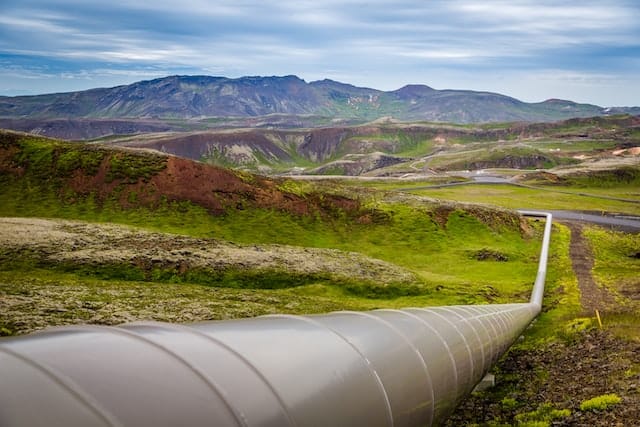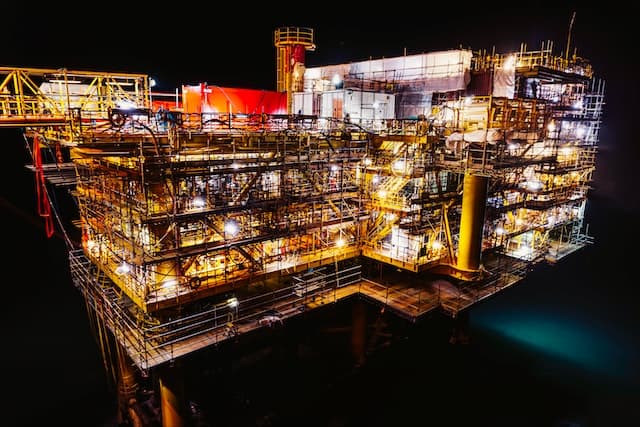Oil & Gas
Algae Polymers in Petroleum Applications, Exploration and Environmental Remediation
While risks in petroleum exploration cannot be eliminated, they can be controlled and reduced by adopting appropriate technological and conceptual innovations. In addition to evaluating the risks, oil exploration requires a thorough assessment of the geological environment of the area. This evaluation includes the types and quantity of data available, such as seismic data, geological formations, and existing fields and production. In addition, the risks should be minimized by implementing appropriate workflow and environmental management practices. The primary goal of exploration is to identify a prospective field, quantify the volume of hydrocarbons it contains, and evaluate the risk associated with the project. A prospect is an identifiable target that is proven by geological and geophysical indications, as well as meeting the technical and market conditions required to make it commercially viable. Drilling exploratory wells helps assess whether the geological hypotheses are correct and whether the location has variations. Once the exploration is complete, the oil company can begin development and book its oil reserves.

If you’re in the oil and gas industry, you have probably wondered what the cost of Oil Drilling is. In general, the costs are around 85% of current revenues, so you must expect a future rise in prices and production to make up for the cost. The cost of drilling for oil has dropped significantly since 2012. This trend has been attributed to improved technology. Moreover, demand for oil drilling facilities is increasing, as the Baker Hughes tally of active oil rigs has been climbing for 11 straight weeks. These are good signs for the oil market. But you should understand that many variables still drive oil prices. For example, the price of oil in the United States affects drilling costs, so it is crucial to keep an eye on these. Onshore wells typically cost $6.6MM to 8.1MM for a well in the Permian Basin. However, cost per thousand feet varies considerably between plays. As technology improves, oil wells are getting longer laterals. Without these variables, total cost numbers are abstract. Instead, cost per 1,000 feet of lateral length is a better indicator of actual costs.
The Potential Role of Algae Polymers in Petroleum Applications and Exploration
Algae Polymers are derived from extracts of brown seaweeds, red and green algae that are mainly polysaccharides, phlorotannin’s, proteins and nucleic acids. Algae Polymers have many industrial uses, including water and soil remediation applications, agriculture, aquaculture, poultry agriculture, aquaculture, poultry, mining, petroleum, and water-based and water-based ecological protective coatings. In the case of petroleum applications and exploration, algae polymers offer considerable benefits to the environment and production costs as described below:
- Remediating contaminated wells, Petro sludge, soils, process waters, and hydrocarbon spills.
- The prevention of corrosion of onshore installations and pipelines.
- The prevention of corrosion and fouling of offshore installations and pipelines.
- Removal of paran build-up in existing oil pipelines and tanks, reducing or eliminating the need for pigging.
- The prevention of paraffin build-up by coating the inner capillary of new pipelines.
- Advanced mud lubricant with thermal protection above 1,900 degrees F.
- Improves drill bit lifespan and performance.
- Drilling mud additives for improved bore stability and control blow-back.
- Geo-anti-corrosive drilling mud for drilling.

Algae Polymers for Improving Drilling Fluid Performance and Management
There are many good reasons to improve drilling fluid performance and management, not least of which is economics. Mud may represent 10% to 15% of drilling costs but may cause 100% of drilling problems. Estimates of worldwide nonproductive costs associated with shale (Rock Type) problems are put at approx. $500 to $600 million annually. Common drilling problems like stuck pipe arise from hole closure and collapse, erosion, and poor mud condition. In addition, the inferior wellbore quality often encountered in shales may make logging and completion operations difficult or impossible. Drilling fluids play sophisticated roles in the drilling process: stabilizing the wellbore without damaging the formation, keeping formation fluids at bay, clearing cuttings from the bit face, and lubricating the bit and drill string.
Algae-based composites as environmental remediation technologies capable of safely removing toxic substances from the environment.
The global environmental pollution problem has increased the demand for effective remediation technologies. This is because increasing levels of environmental pollution affect humans and their ecosystems. Some of these pollutants are carcinogenic and cause hormone disruptions, while others damage plants and animals. Acid rain, for example, is a major cause of ecosystem destruction, damaging trees and other ecosystem layers. Many governments have instituted environmental protection and restoration policies to address this problem. Environmental remediation technologies are becoming more common, with various types of pollution being addressed.

What are environmental remediation technologies?
Environmental remediation technologies remove pollutants or contaminants from the environment such as soil, groundwater, sediment, or surface water to protect human health and the environment, or possibly from a brownfield site. Remediation plans are prohibitively expensive, labor intensive, and/or marginally effective. Unfortunately, most of the time, there are no good alternatives. As a result, new remediation technologies are desirable.
Remediation technologies can be classified as either in-situ or ex-situ. In situ remediation involves using various tools, devices, and processes in a specific site to reduce the amount of contamination. Bioremediation is another type of environmental remediation. This technique involves modifying the local environment so that organisms in the environment can degrade the pollutants in the soil. It involves using green plants, biochemicals, and organisms to reduce contamination. This process is cost-effective and can reduce environmental risks.
The global market for environmental remediation technologies was valued at $65.2 billion in 2016 and is projected to reach $82.7 billion by 2022. The market is expected to grow at a 4.0% CAGR during the period 2017-2022. Remediation technologies are used to remove contaminants from soils, groundwater, and surface water. They are applied to various sites, including oil and gas facilities and waste sites.
Algae-based composites as a new remediation technology.
Algae Polymers have many industrial uses, including water and soil remediation applications, agriculture, aquaculture, poultry agriculture, aquaculture, poultry, mining, petroleum, and water-based and water-based ecological protective coatings. Algae Polymers products can be used to eliminate the need for sodium cyanide, mercury, and lime in the need for sodium cyanide, mercury, and lime in mining separation and flotation. More importantly, impacting the loss of human lives and the cost of the controlled logistics of these raw materials and products for this specific industry. These products are derived from a patented seaweed-based technology and have been tested in mining with positive and responsive results.
